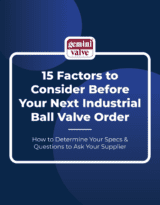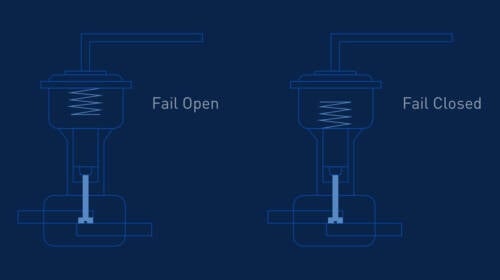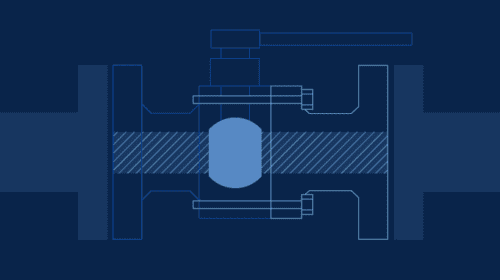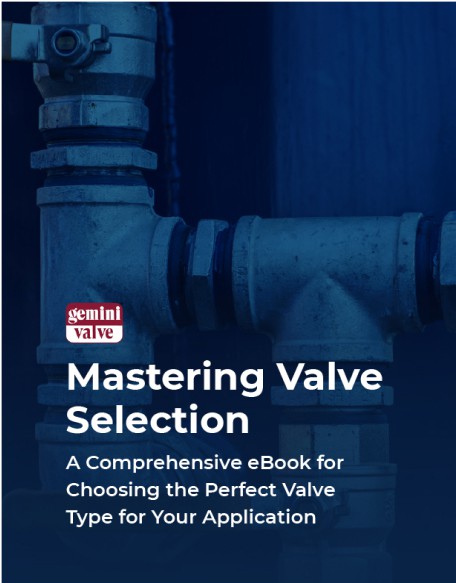What Is a Compression Ball Valve Fitting?
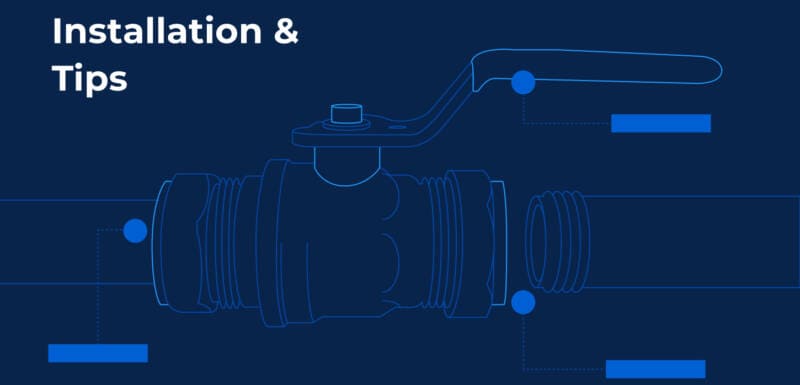
A compression ball valve fitting refers to the type of connection between the valve and the piping system in which it is installed. Most ball valves fasten into piping systems via threaded connections; on the other hand, compression end fittings are designed to compress around tubing.
A compression fitting is made up of three components:
- A compression nut or screw
- One or more ferrules or washers
- A compression fitting body
The tubing is inserted into the end of the valve fitting, then the nut or screw is tightened, forcing the ferrule(s) into the valve body and against the internal seat. This compression creates a tight seal between the valve body and the tubing, preventing liquid from moving through. Soft tubing made of PVC, polyethylene or polyurethane is used most commonly, but more rigid tubing can be used as long as the fitting is able to create a tight seal.
Compression fittings can be used with a variety of valve styles such as globe valves, needle valves and gate valves, but ball valves with compression fittings are the most common.
Benefits of Using a Compression Ball Valve
Compression ball valve fittings are favored for their:
- Quick on/off response
- Less obstructive port
- Fewer maintenance requirements
- Lower cost
- Smaller footprint
- Easy installation
While some types of compression shutoff valves can be repaired, it is almost always safer (and more economical) to replace a compression ball valve entirely.
How to Install a Compression Fitting
The following steps are intended only to highlight the basics of compression ball valve installation. Always follow the manufacturer’s specific instructions and guidelines for the compression end ball valve being used. Additionally, consider any applicable local codes and regulations related to plumbing installations. If you are unsure about any aspect of the installation, consult with a professional plumber or technician.
Materials and tools:
- Compression end ball valve
- Tubing cutter or hacksaw
- Deburring tool or file
- Adjustable wrench or pliers
- Teflon tape or thread sealant (if necessary)
Installation steps:
First, a note on valve orientation. Ball valves may be installed horizontally or vertically, depending on the application. Pipe runs incorporating standard ball valves are bi-directional, meaning that neither flow direction nor valve orientation is critical.
However, in some applications, the orientation of the ball valve does matter. For example, some ball valves utilize pressure relief vents in the ball on the upstream side, which is necessary to relieve pressure within the ball in applications with extreme temperatures. In these cases, the valve manufacturer may label the valve to indicate the correct flow direction. If you are unsure, consult with the manufacturer directly.
Depending on the valve, there may be limitations on the acceptable orientations for installation. Consult the manufacturer before considering any unconventional installation methods for the valve.
- Prepare the tubing
Measure and mark the tubing at the desired location for the valve installation. Use a tubing cutter or hacksaw to cut the tubing squarely at the marked location. - Deburr the tubing
Remove any burrs or sharp edges from the cut tubing using a deburring tool or a file. Smooth edges help prevent damage to the compression fitting and ensure a proper seal. - Inspect the valve
Before installation, inspect the compression end ball valve for any visible defects or damage. Ensure that all components, including the compression nut and ferrule, are in good condition. - Prepare the valve
Slide the compression nut and ferrule onto the tubing with the threaded side of the nut facing the cut end of the tubing. - Insert the tubing
Insert the prepared end of the tubing into the compression end of the ball valve until it seats securely. - Tighten the compression nut
Using an adjustable wrench or pliers, tighten the compression nut onto the valve body. Be careful not to over-tighten, as this can damage the tubing and fittings. - Check for leaks
Turn on the water or fluid supply and check for any leaks around the compression fitting. If leaks appear, tighten the compression nut slightly until the leaks stop. - Make any final adjustments
Once the connection is leak-free, make any final adjustments to the orientation of the valve if necessary. - Secure the valve
If the valve is installed in a location where it may be bumped or moved, consider securing it in place using appropriate brackets or supports. - Label the valve (optional)
Consider labeling the valve to indicate its function or the system it controls. This can be helpful for future maintenance or troubleshooting.
When to Use a Compression Fitting
Ball valve compression fittings are commonly used in plumbing and fluid control applications that require immediate shutoff, since the fitting provides such a tight seal. Other common use cases for compression fittings include:
Accessible locations: Compression fittings are a practical choice in situations where you need easy access to manipulate the valve manually. Since compression fittings allow for compact design, they are ideal in areas where space is limited.
Temporary installations: Compression fittings allow for a relatively easy and tool-free disconnection, so they can be helpful in temporary plumbing installations or situations where the plumbing may need to be disassembled and reassembled without using specialized tools.
DIY plumbing: Valves with compression fittings can be more user-friendly for individuals without extensive plumbing experience, as they are relatively easy to work with and don’t require soldering or threading.
Compatible with multiple tubing materials: Ball valve compression fittings are versatile and can be used with soft, semi-rigid or rigid tubing materials, including copper, plastic or stainless steel. This flexibility makes them suitable for a range of applications.
It’s important to note that while compression fittings are convenient, they may not be ideal for high-pressure or critical applications. In these scenarios, other types of fittings, such as soldered or welded connections, may be more appropriate. Additionally, proper installation is crucial to ensure a reliable and leak-free seal. Follow manufacturer guidelines, and use the appropriate tools and materials to successfully install valves with compression fittings.
If you have any questions about compression fitting installation, maintenance or replacement, give the Gemini Valve team a call at (866) 930-0169 or send us a message today.
15 Factors to Consider Before Your Next Industrial Ball Valve Order
This guide includes everything you need to know before placing your next industrial ball valve order.


